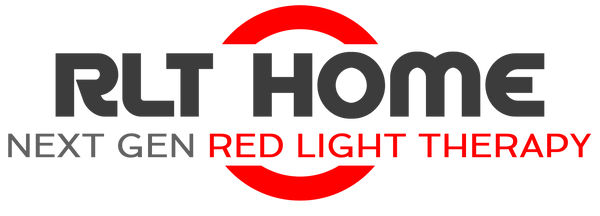Red Light Therapy for Ligaments: A Guide to Healing and Recovery
Ligaments are fibrous, strong tissues that connect bones together, providing strength and stability to your joints. When ligaments are injured, it severely impedes your capacity to move. While conventional treatments can be slow, red light therapy is an appealing alternative. It employs low-level red and near-infrared wavelengths to activate the body's intrinsic healing processes at the cellular level. This treatment can help speed the healing process by increasing circulation, reducing inflammation, and promoting the regeneration of damaged tissues.
Table of Contents
Understanding Ligament Injuries: Causes and Recovery Process
Ligaments are fibrous connective tissue comprised of elastin and collagen fibers that give them strength and stability. The most common ligament injury is a sprain, which occurs due to overuse or overstretching. Because ligaments stabilize joints, an injury can greatly impair movement and lead to pain, swelling, and instability. Sports activities, accidents, and repetitive strain are common reasons for ligament injuries, such as an ACL tear or sprained ankle.
Challenges with Traditional Ligament Treatments
Healing ligaments using conventional treatments is complex, as such treatments can take weeks or months. One of the main challenges is that ligaments have limited blood supply, so natural repair is slow. While pain medications may help, they don't provide healing agents directly to the ligaments. Physical therapy is helpful, but improvement comes slowly. If the ligament has a full rupture, it may require surgery, which entails risks such as infection and scarring.
How Red Light Therapy Supports Ligament Healing
The Science Behind Red Light Therapy for Ligament Regeneration
Red light therapy sends particular wavelengths of red and near‑infrared light that move through your body and heal ligaments on the cellular level. Light photons are absorbed by mitochondria in ligament cells, stimulating the creation of energy in the form of ATP. Additional ATP drives cellular repair processes like collagen synthesis and cell growth. RLT also triggers the production of nitric oxide, causing the relaxation of local blood vessels. The increased circulation provides the injured ligament with a higher amount of oxygen and nutrients. In general, using one of the best red light therapy devices helps your ligaments heal quicker without chemicals or incisions.
Does Red Light Therapy Work for Ligament Injuries? What Research Says
Red light therapy research for ligaments yields positive outcomes. Experiments prove that red light therapy heals ligaments successfully by promoting cellular recovery and minimizing inflammation and pain. Research also proves that red light therapy provides an environment that facilitates ligaments to heal faster.
Clinical Studies on Red Light Therapy for Ligament Injury Recovery
Study 1: Effect of 830 nm Near-Infrared LED Phototherapy on Accelerating Return‑to‑Play
This pilot study aimed to determine if 830 nm near‑infrared LED phototherapy could accelerate the return‑to‑play (RTP) time in university athletes recovering from musculoskeletal injuries. Of 65 athletes who received the full treatment, most had significant pain reduction and were back playing in an average of 9.6 days, as compared to the 19.2 days normally required. No side effects were noted.
Study 2: Efficacy of Daily 830-nm Diode Laser Therapy in Treating Carpal Tunnel Syndrome
This placebo-controlled trial sought to determine if daily treatment with an 830‑nm diode laser would alleviate pain in patients with mild to moderate carpal tunnel syndrome (CTS). The patients treated with the actual laser had significantly less pain and significant improvements in hand function and strength. This indicates LLLT could be a beneficial noninvasive therapy for CTS.
Choosing the Right Red Light Therapy Device for Ligament Support
Key Features to Look for in an Effective Device
When purchasing a quality red light therapy device, consider these features:
- Specific Wavelengths: Ensure the device provides red light in the 610–660 nm range and near-infrared light at 810, 830, 850, 980, or 1064 nm.
- Light Source: Choose a device with LEDs as the light source.
- FDA-Approved: It is essential to utilize an FDA-approved device.
- Adequate Irradiance: The device should deliver sufficient light intensity to be effective.
Total Spectrum Devices: Tailored Red Light Therapy for Ligament Support
The Total Spectrum Series is designed to heal ligaments using a wide spectrum of near-infrared and red light. This gives your ligaments a better chance to heal by bringing blood to both the surface and deeper tissue. The series equipment is also portable and easy to use in the comfort of your own home, making it a sound choice for anyone who wishes to promote ligament healing.
Best Practices for Using Red Light Therapy for Ligament Recovery
Finding the Right Dosage: Frequency, Session Length, and Distance
To achieve optimal outcomes with red light therapy, it is important to follow the correct protocols. For a detailed dosage guide, always refer to the official instructions. A general guideline is:
- Frequency: Treat 3–5 times a week.
- Session duration: Each session should be 10–20 minutes.
- Distance: Keep the device approximately 6–12 inches from the area being treated.
Conclusion: The Role of Red Light Therapy in Ligament Treatment
Increasing numbers of individuals opt for red light therapy for ligament health because it heals tissue at its source, reduces inflammation and pain, and accelerates recovery. This gentle, non-invasive therapy is favored because it doesn't produce side effects. It's simple to use at home and easily integrates into your daily routine. Many individuals experience less pain and move more easily after only a few sessions.
FAQs: Addressing Common Questions
Does red light therapy help heal ligaments?
Yes, red light therapy helps heal ligaments by stimulating recovery at the cellular level. It also enhances blood circulation, ensuring ligaments receive enough oxygen and nutrients to heal faster.
Can red light therapy repair cartilage?
Yes, red light therapy can effectively aid in the repair of cartilage by stimulating the production of collagen and promoting recovery at the cellular level.
References
- Carpal tunnel syndrome treated with a diode laser...
- 830 nm light-emitting diode (LED) phototherapy significantly reduced return-to-play in injured university athletes...







